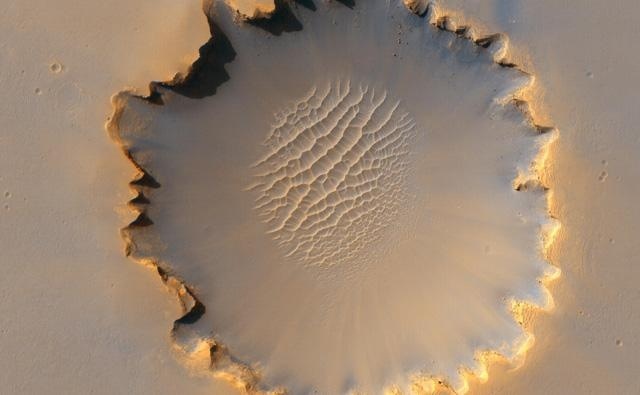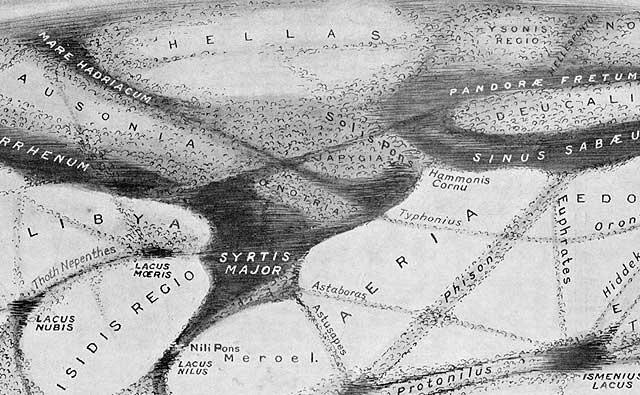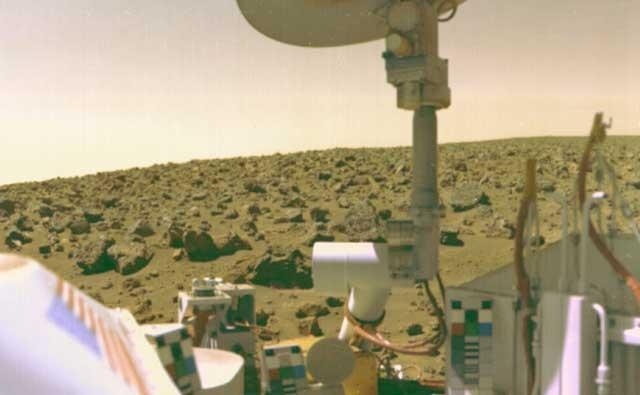
The search for life on Mars
Some early astronomers were certain that intelligent beings lived on Mars. Percival Lowell popularised the idea that the Martians built canals to irrigate their dying planet.
In 1965, the Mariner 4 probe took the first close-up photographs of the Red Planet and revealed a barren and crater-scarred surface more like that of the Moon.
The 1976 Viking mission’s negative microbial life test results further dampened the prospects of even the tiniest forms of Martian life.
But the recent discovery of methane plumes in Mars’s atmosphere, a tantalising clue pointing to potential subsurface life, has raised the hopes of some experts.

Canals on Mars
Some 19th and early 20th century astronomers thought they could see linear marks on Mars and speculated that they were an alien civilisation’s canals. The Italian astronomer Giovanni Schiaparelli and others named the features canali, Italian for channels.
The American Percival Lowell popularised the idea that intelligent life forms had created the canals, as the features came to be known. Many other astronomers were sceptical. It is now thought that well-intentioned pioneers mistook ordinary Martian surface features for canals.

VIKING 1 AND 2. The first hunt for life on Mars
The Viking program comprised a pair of American space probes sent to Mars, Viking 1 and Viking 2. Each spacecraft was composed of two main parts: an orbiter designed to photograph the surface of Mars from orbit, and a lander designed to study the planet from the surface. The orbiters also served as communication relays for the landers once they touched down.
It was the most expensive and ambitious mission ever sent to Mars, with a total cost of roughly US$1 billion. It was highly successful and formed most of the body of knowledge about Mars through the late 1990s and early 2000s.
The Viking program grew from NASA’s earlier, and more ambitious, Voyager Mars program, which was not related to the successful Voyager deep space probes of the late 1970s. Viking 1 was launched on August 20, 1975, and the second craft, Viking 2, was launched on September 9, 1975, both riding atop Titan III-E rockets with Centaur upper stages. Viking 1 entered Mars orbit on June 19, 1976, with Viking 2 following suit on August 7.
After orbiting Mars for more than a month and returning images used for landing site selection, the orbiters and landers detached; the landers then entered the Martian atmosphere and soft-landed at the sites that had been chosen. The Viking 1 lander touched down on the surface of Mars on July 20, 1976, and was joined by the Viking 2 lander on September 3. The orbiters continued imaging and performing other scientific operations from orbit while the landers deployed instruments on the surface.
Originally posted 2013-05-15 20:28:02. Republished by Blog Post Promoter

![20130515-222432[1]](https://coolinterestingnews.com/wp-content/uploads/2013/05/20130515-2224321.jpg)










